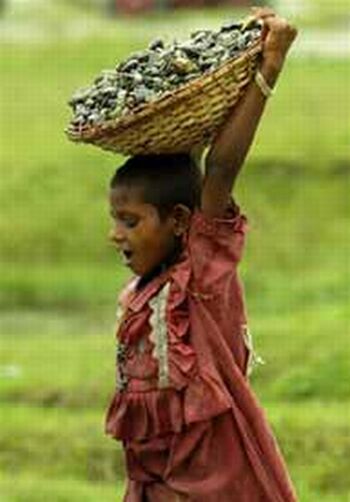Cram schools in Taiwan.
If I can set free a group of slaves, I would love to set free these poor cram school students in Taiwan. These students are mostly in the age group from kindergardeners to college graduates. Cram schools are common in Asia. In addition, cram school's condition is extremely serious in Taiwan. Almost every local school students from age of 4 to 22 have cram schools schedule right after school. They do not only go to cram schools for examination in schools, but also they go to cram schools for special curiculum that their parents wish their child to have. I considered them as "slaves" because they are technically "owned" by their parents. Many parents will not let the child to join sport teams like that of the Westerners. In some cases, the parents of the child will not let the child eat, if they do not go to cram schools. Some parents will even apply corporal punishment on their kids if they do not go to cram schools. Kids of these ages are not capable enough to live by themselves, so they do not have the "freedom of choice" of going to cram schools or not. Most of these kids are forced to go to cram school, instead of actually trying to get better grades from what they learn in cram schools. Wouldn't kids' lives be better if they can be free from cram schools, and have choices that they make for their own schedule after school?
Child labor have been a big problem in Asia. Among these Asian countries, India is considered to have the second highest numbers of child labors. (1) These child labors have the ages varied from as young as 5 years old to about 20 years old. (6) Many of these young kids work in a dangerous company to help boost a little bit of income for their families. (3) Although the Indian Parliament had passed the Bonded Labour System Act in 1976, which made bonded child labor illegal, still, industries hire bonded child labors as servants. (1) Bonded child labors are basically labors work under a feudal lord to pay off their debts. (4) This system is still commonly used in Asia, more commonly found in India's Pakistan and Nepal. (4) There are also some child labors that are in the group of "street children". They may work as a begger today, and then sell small items on the street tomorrow. (1) Kids are also sold to extreme working enviornment, such as glass factories, match box factories, and carpet industries. (1) Carpet industries' child labors in Northern India were said to be paid very little salary, but long hours of work that is up to 16 to 18 hours a day. (5)
"I start work early but don't finish until late into the night I get paid less than two dollars a week.", said the 13 year old Sindhu. The owner of the child labors always denied of hiring underage workers with low wages. (6)
Another true story of child labor in India is Mohammad Manan Ansari. He had worked in a mica mine starting from the age of 8, and he is now 14 years old. He said that there are many kids from his village, Samsahiriya, work in this mine as well. Many kids are as young as 6 to 7 years old. He said that his work begin at 10 in the morning, and ends at 6 in the evening. Despite the hours being so long, Ansari is only paid 20 rupees(US $40 cents) at the most, and 4-8 rupees at the minimum. This salary is only followed if he could observe a kilo of ore in exchange of money. (7)
The governmnet of India is taking the child labors issue in India very seriously. The governmnet had formed the Gurupadswamy Committee to study the case and to suggest how to end the issue. However, because of socio-economic issues, the Committee were not able to compeletly ban child labors in India. Instead, they wanted to ban children under the age of 14 to work in a highly dangerous enviornment. This idea resulted the passing of the Child Labour( Prohibition and Regulation) Act in 1986. (2) This Act provided a list of invalid places to hire child labors, the safety concern for child labors in a working enviornment, and the certain rights reserved for child labors on their jobs. (1) The Child Labor Act of 1986 made it illegal for child under 14 to be employed. (2) These laws are often violated, because there are lots of loops in the law that were not stated clearly. (2)
Ways to decrease child labors:
1. Free Primary Education for all children ( At least until the end of 9th grade)
2. Give the jobs of child labors' to the adults- adults have higher salaries, better economy
3. Increased Family Income (8)
Links:
1. http://childlabour.in/child-labour-in-india.htm
2. http://labour.nic.in/cwl/welcome.html
3. http://www.childlabor.in/index.htm
4. http://newsletters.ahrchk.net/qaumi/mainfile.php/0204/105/
5. http://articles.cnn.com/2010-08-16/world/kara.human.traffic.india_1_carpet-belt-carpet-industry-child-labor?_s=PM:WORLD
6. http://news.bbc.co.uk/2/hi/5059106.stm
7. http://m.asianews.it/news/15489?l=en
8. http://veeranath.hubpages.com/hub/Stop_child_labour



No comments:
Post a Comment